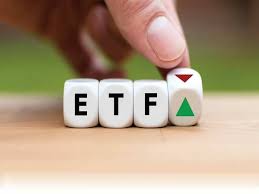A "Top-Down" Strategy for ETFs

Investing in ETFs Advanced Skills, a "top-down" strategy for ETFs.
What is a "top-down" ETF investment strategy?
The "top-down" investment strategy is to track and analyze the macroeconomic trends in the global market from macro to micro, identify which countries and industries can generate the greatest returns, and then select the appropriate ETFs for investment and trading to generate additional returns.
He manages hedge funds that invest in stocks, bonds, commodity futures, foreign exchange and financial derivatives, with the main income coming from the relative allocation of each market.
In fact, we can think of "top-down" simply as a trilogy.
First, to examine macroeconomic, government policy and market trends.
Secondly, examining industries and sectors.
Finally, select ETFs from promising industry sectors that are worth investing in.
How to apply a "top-down" ETF investment strategy?
Two examples from the macro and sectoral perspectives are given to facilitate the understanding of how the "top-down" ETF investment strategy is applied.
(1) "Top-down" strategy for macroeconomic cycles
For example, this year, due to the neo-coronary pneumonia epidemic, the global economy has rapidly waned and declined, and the stock indices of various countries have experienced tremendous volatility. At this time, if you are optimistic about the future development of a certain country, you can consider laying out a representative broad-based ETF of that country at a low position.
(2) Top-down Investment Strategy for Industries
As a simple example of a "top-down" strategy in the crude oil industry, if recent decreases in crude oil production and supply are expected to result in rapid price increases in the future, crude oil exporters will benefit significantly, and investors can deploy ETFs related to crude oil companies in advance.
What are the advantages of a "top-down" ETF investment strategy?
(1) It can accommodate large volumes of capital. In terms of the scale of funds that can be effectively managed, a "top-down" strategy can generally accommodate a larger amount of funds, and an industry or market Sectors can often accommodate large sums of money without compromising the effectiveness of the investment strategy.
(2) Information is open, transparent and easily accessible. The "top-down" investment strategy uses analytical indicators that are mostly macro or industry-wide indicators of the market, such as: GDP (GDP), CPI (consumer price index), PPI (producer price index), PMI (purchases) (managerial indices), consumer confidence, inflation, deflation, balance of payments, fiscal indicators, etc., all of which are Data that is open, transparent and easily available in the market.
(3) Less volatility, suitable for steady investors. As the ETFs allocated in the "top-down" investment strategy are generally ETFs of representative indices of the entire industry or country, the overall volatility of the ETFs is lower. The ups and downs are much less volatile than individual stocks, so the volatility of this strategy is more stable than individual stocks, making it a prudent strategy for investors. The wise choice.



